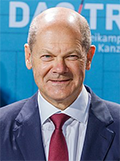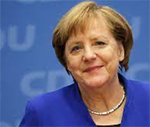After 16 years in power, Angela Merkel is no longer Chancellor of Germany. Holding the office now is Olaf Scholz. A onetime lawyer and First Mayor of Hamburg, he served under Merkel as minister of labour and social affairs in the 2000s and was most recently finance minister and vice chancellor.

Scholz now leads a coalition government made up of three parties, his own Social Democrats, the Free Democrats (FPD), and the Greens. The Social Democrats (SPD) won the most seats of any political party in the Bundestag, the German parliament, but that wasn't enough for the party to govern on its own. Merkel's Christian Democratic Union had no interest in continuing the coalition that existed for 12 of her 16 years in power, so the SPD found willing partners in the pro-environment Greens and the pro-business Free Democrats.
The coalition, the first three-member power share since the 1950s, has been dubbed the "traffic light coalition," after the party colors of the SPD (red), the FPD (yellow), and the Greens (green). FDP party leader Christian Lindner is now finance minister; Greens co-leader Annalena Baerbock is now foreign minister.

Merkel was a landmark politician, the second-longest-serving chancellor in German history (behind Helmut Kohl). She was the country's first chancellor born after World War II, the first leader to be from the former East, and the first female to hold the office. In leaving, she achieved another first, that of a modern chancellor leaving office of her own accord, not after losing an election or a no-confidence vote. She announced in 2018 that she would not seek re-election, and she kept her word.
When she left her post, just before the parliament voted on whether to approve Scholz as her successor, she gained a standing ovation, one that lasted nearly a minute. She then watched from the visitors gallery as Scholz received a strong majority of the votes. As is the custom, Scholz went off to receive the imprimatur of the country's president, Frank-Walter Steinmeier; leaving the president's residence, Scholz then returned to Parliament, where he was sworn in by that body's president, Bärbel Bas.